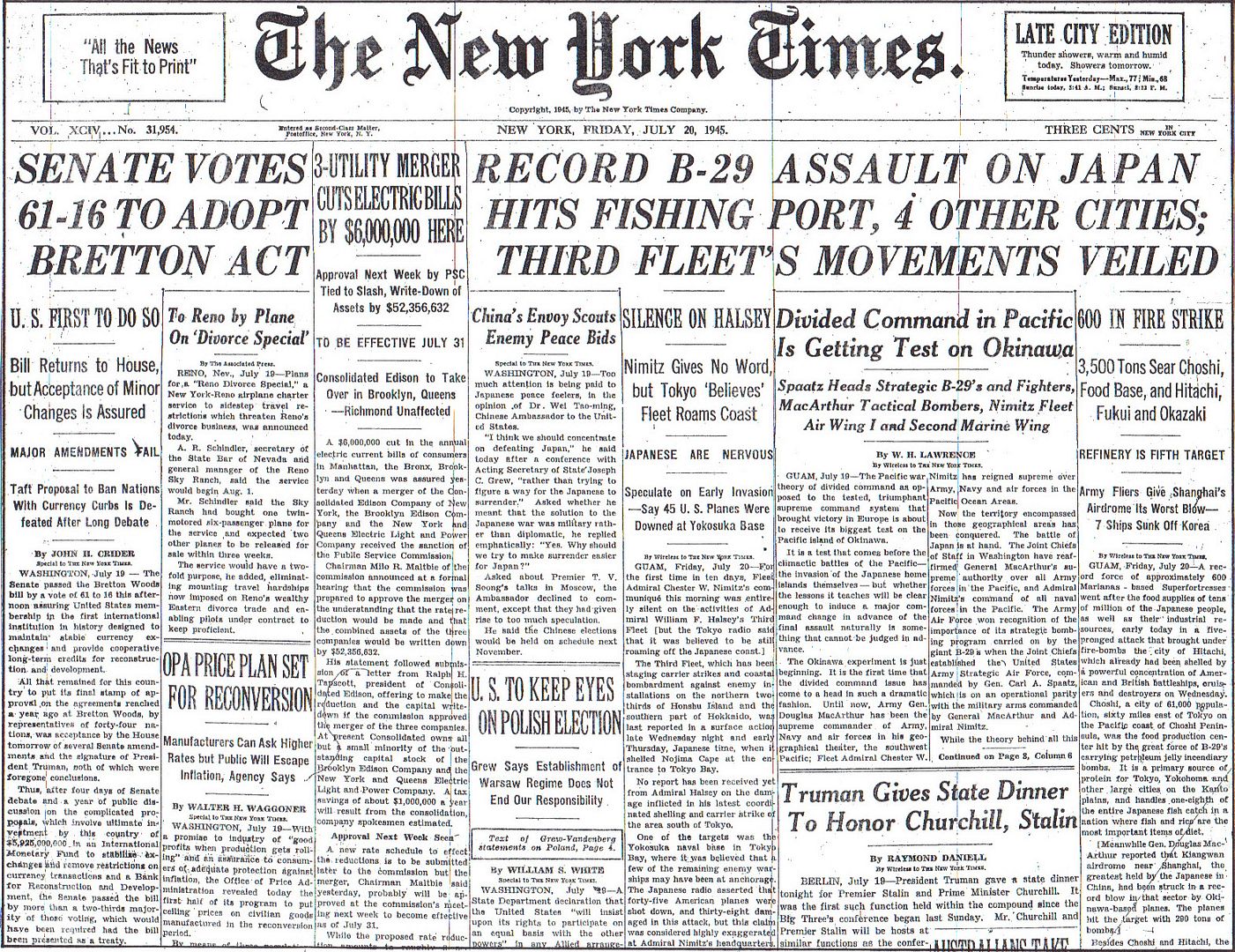
Posted on 7/20/2015, 12:15:17 PM by Homer_J_Simpson

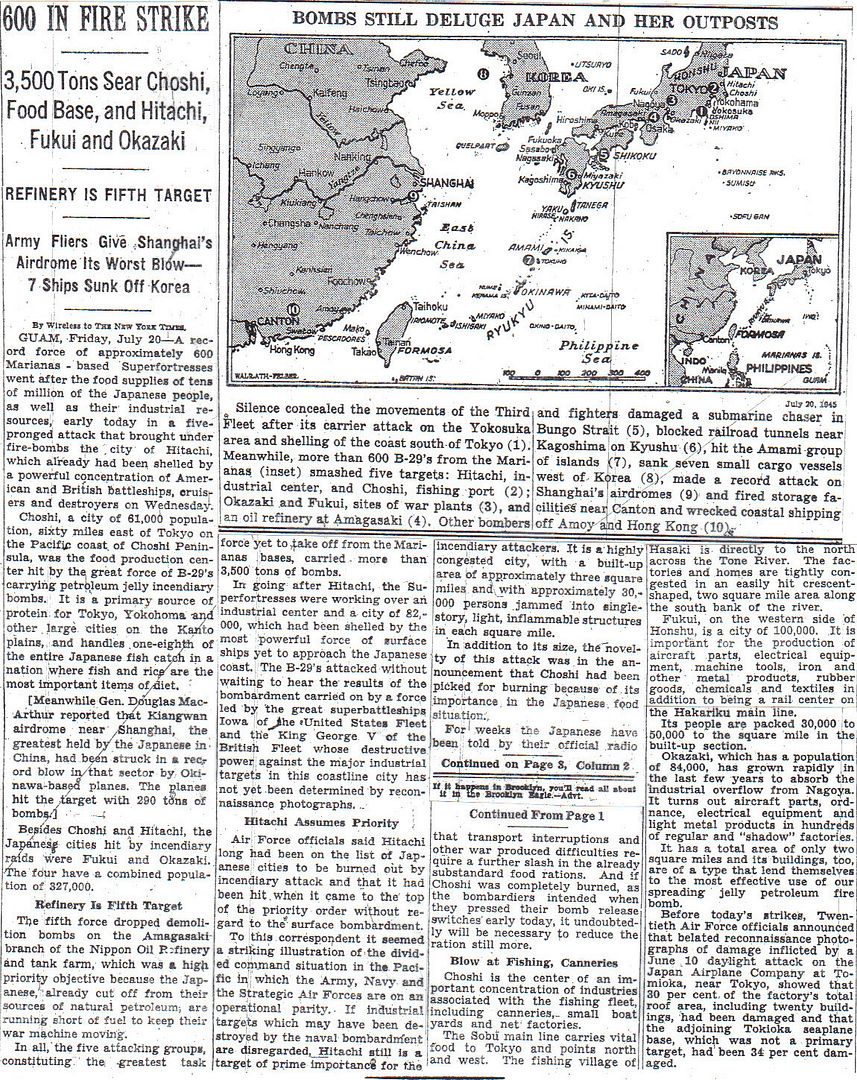
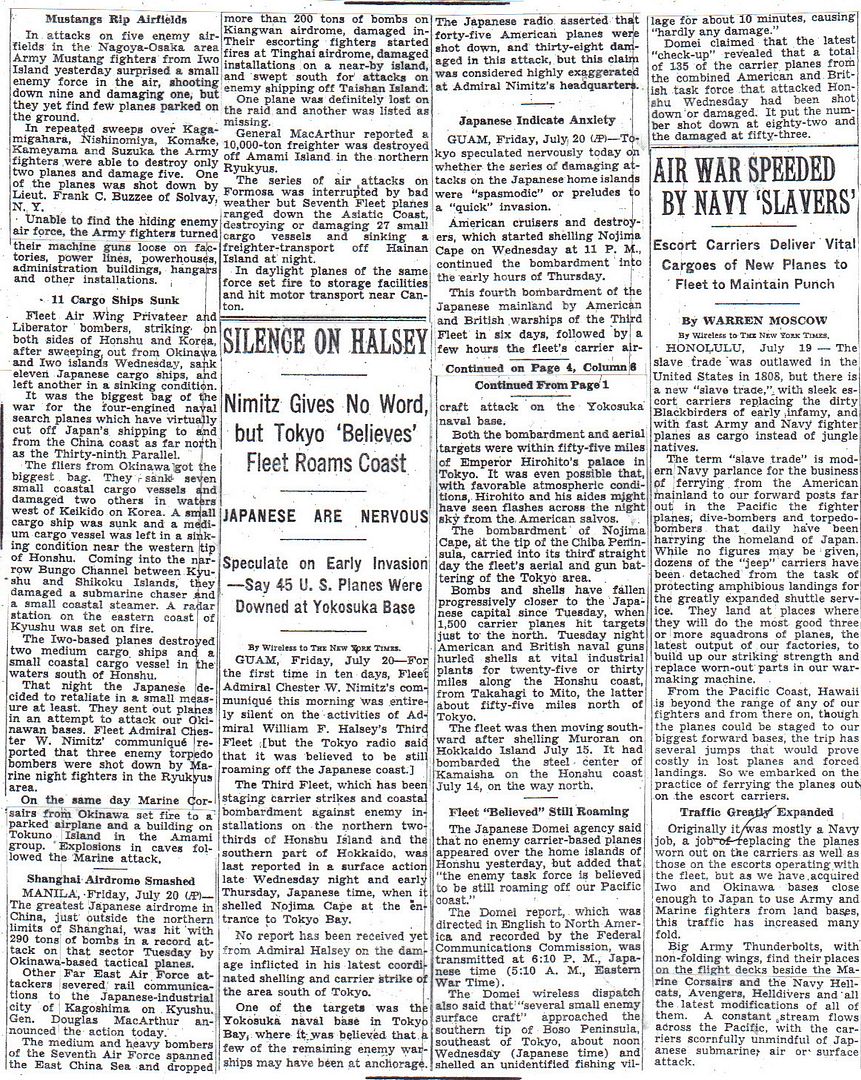
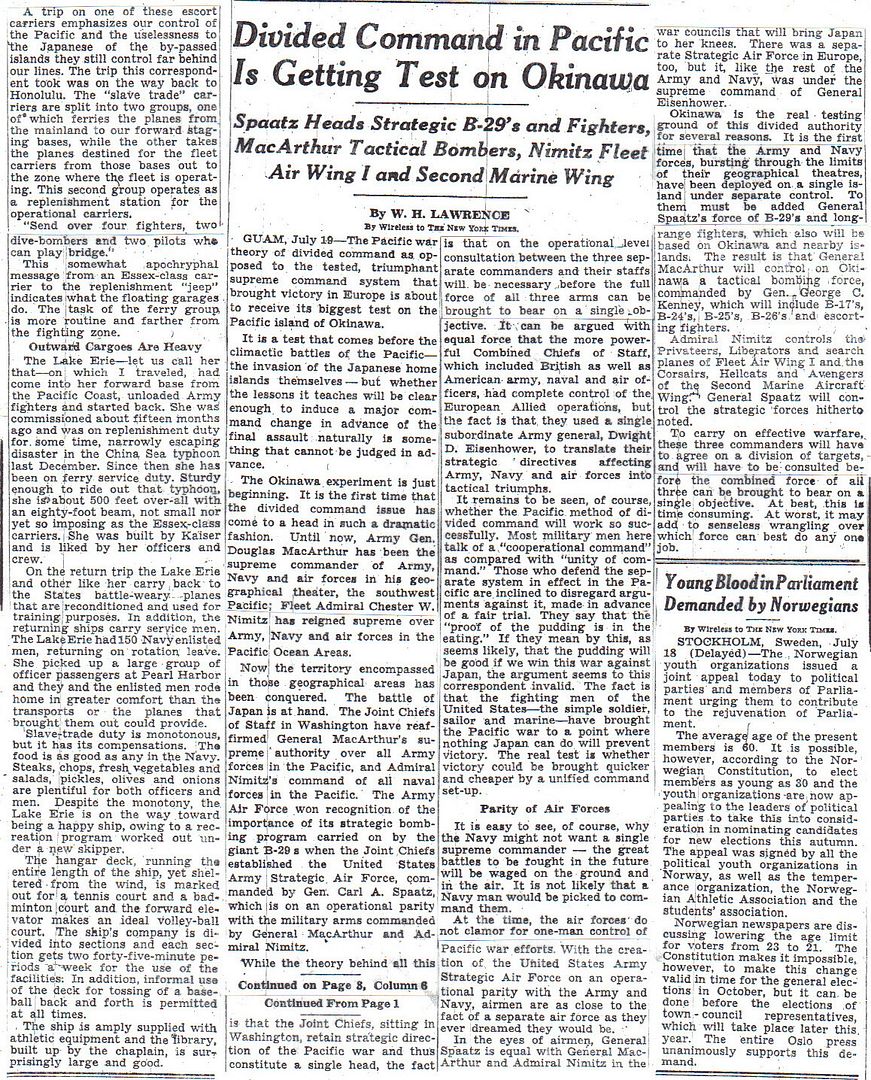
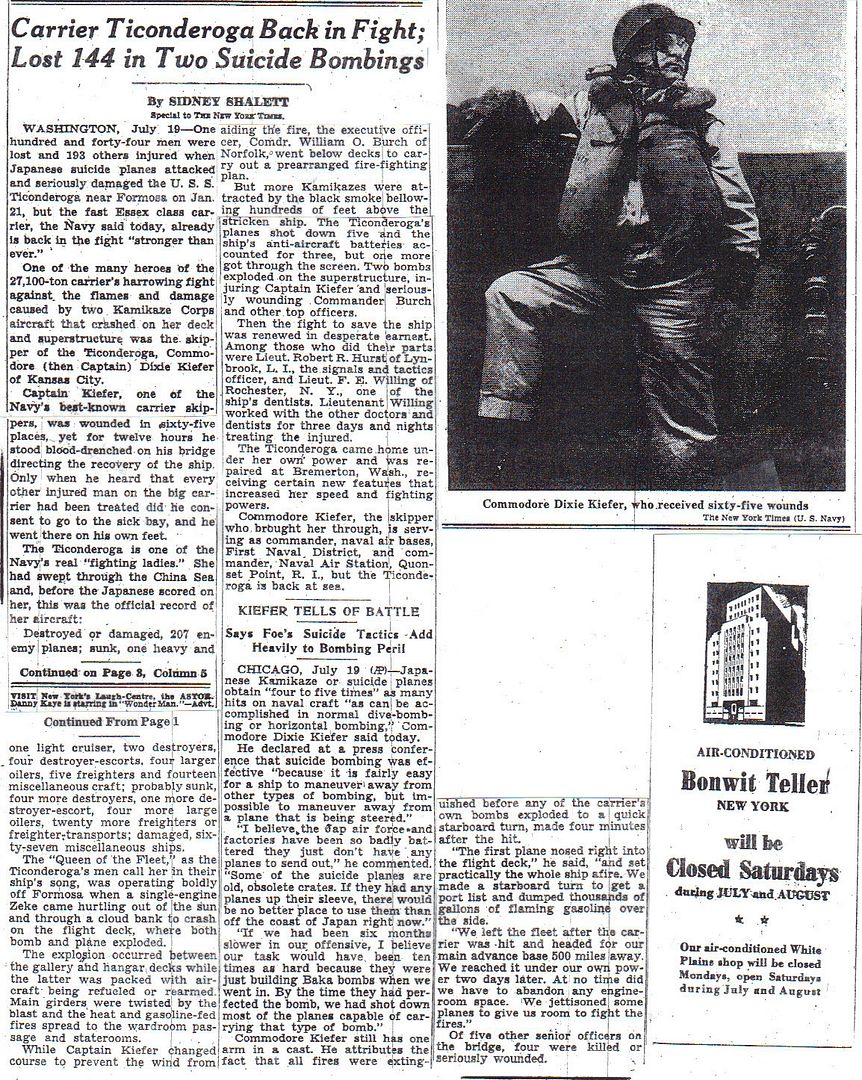
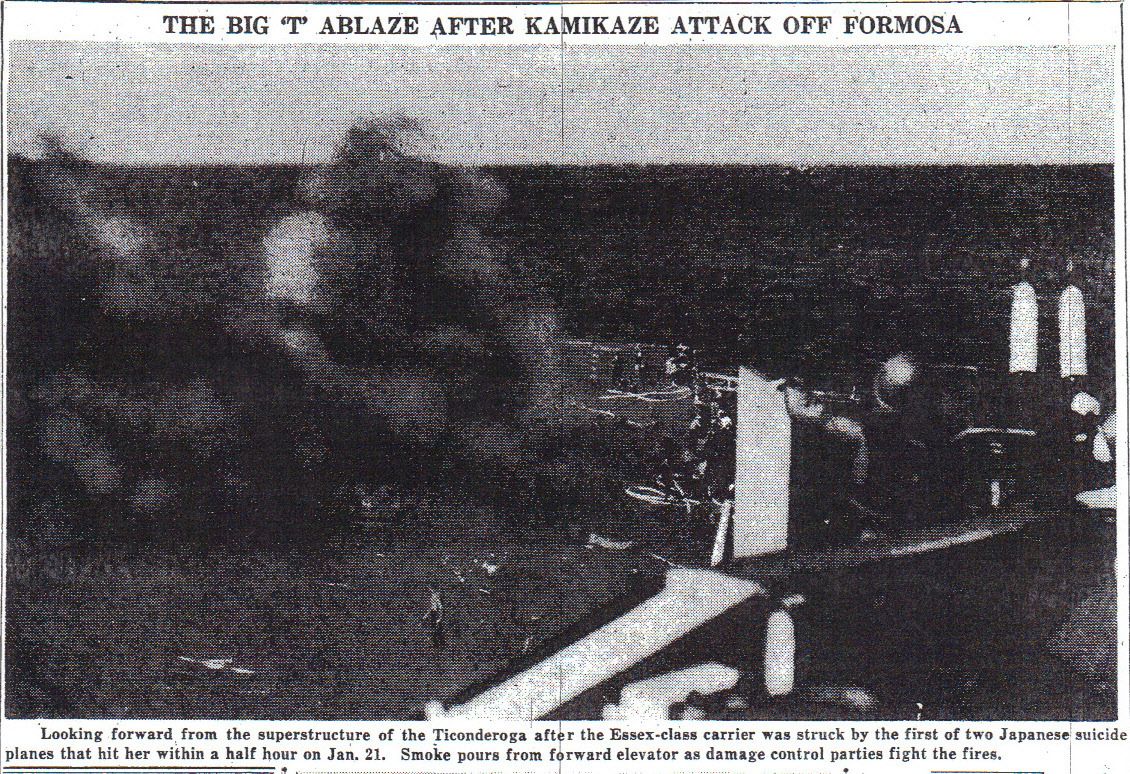
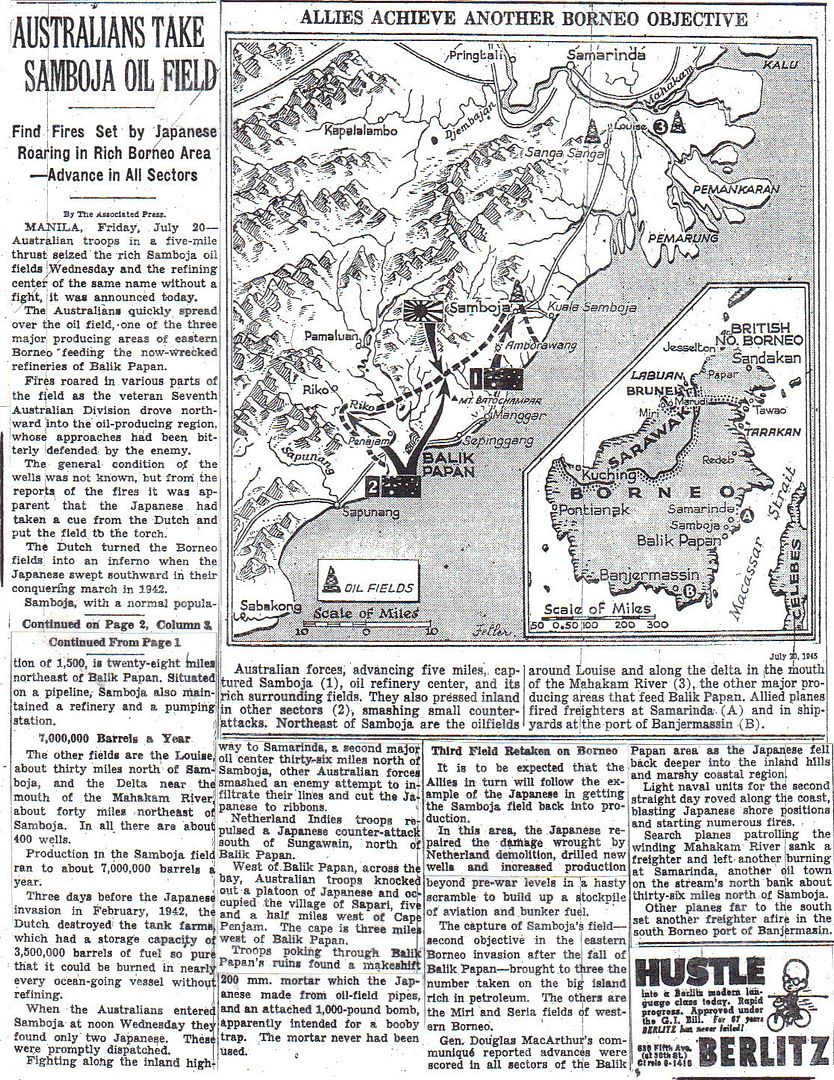
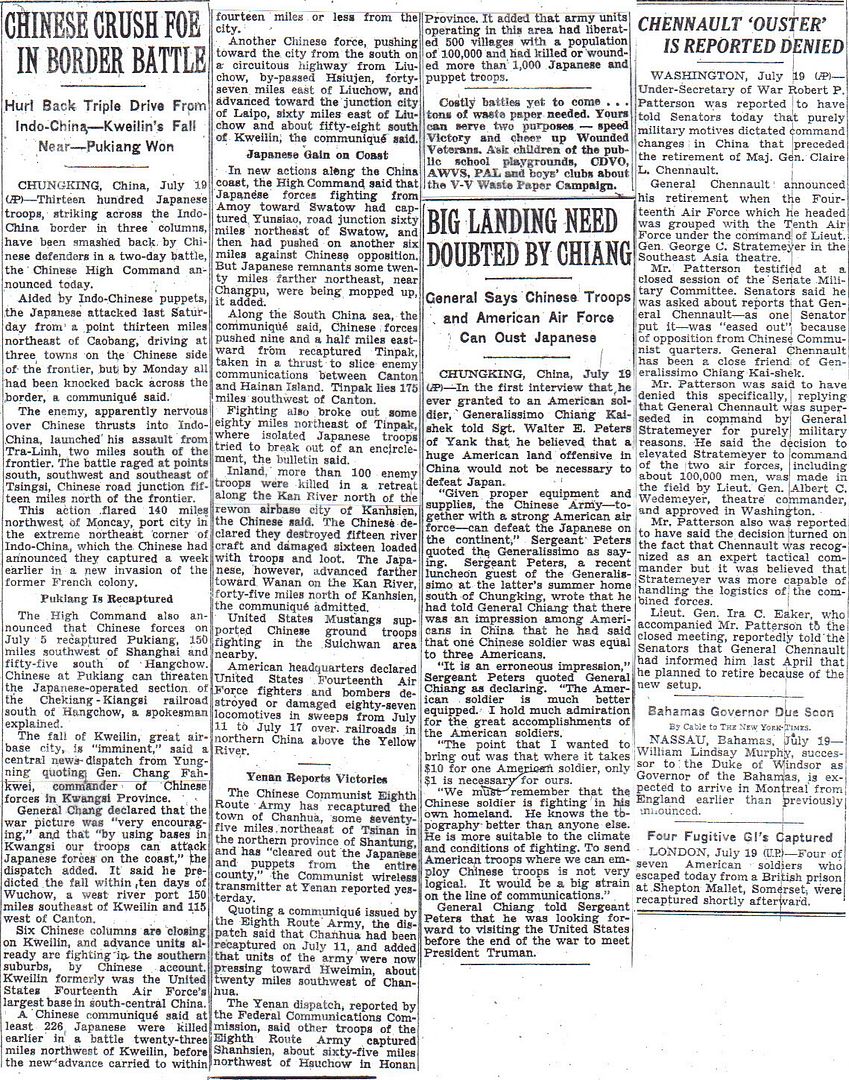
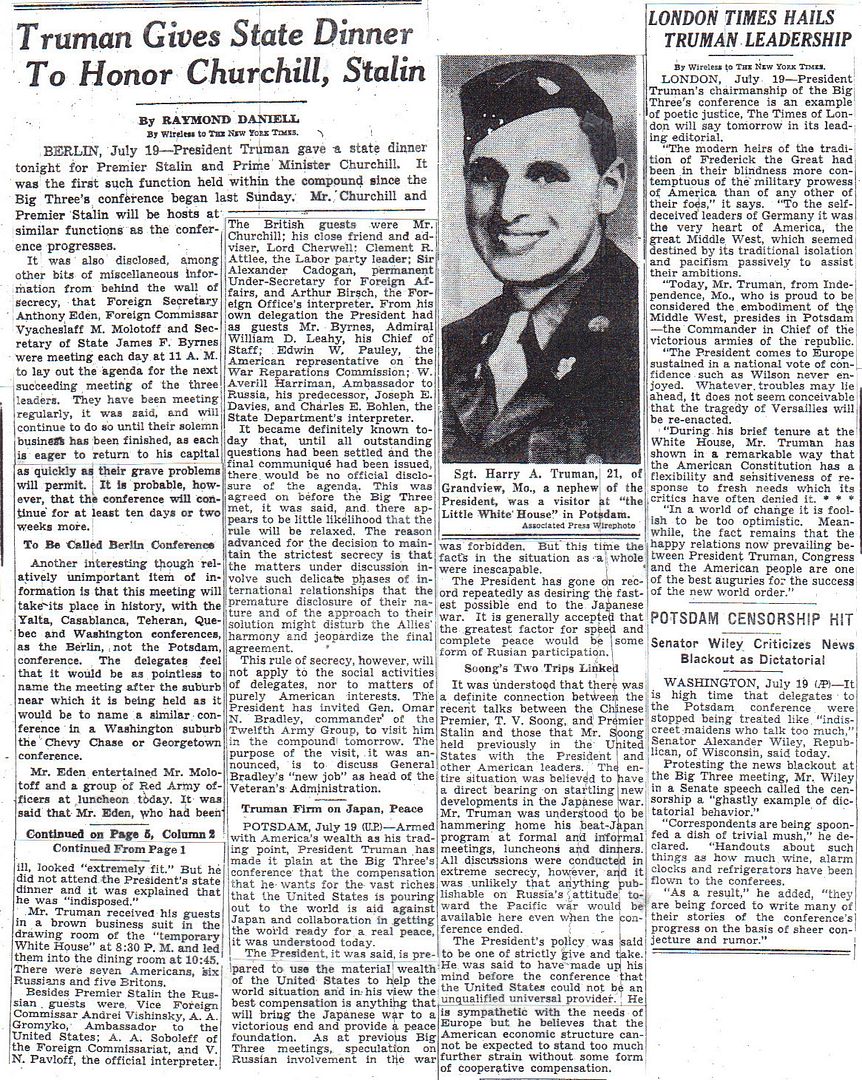

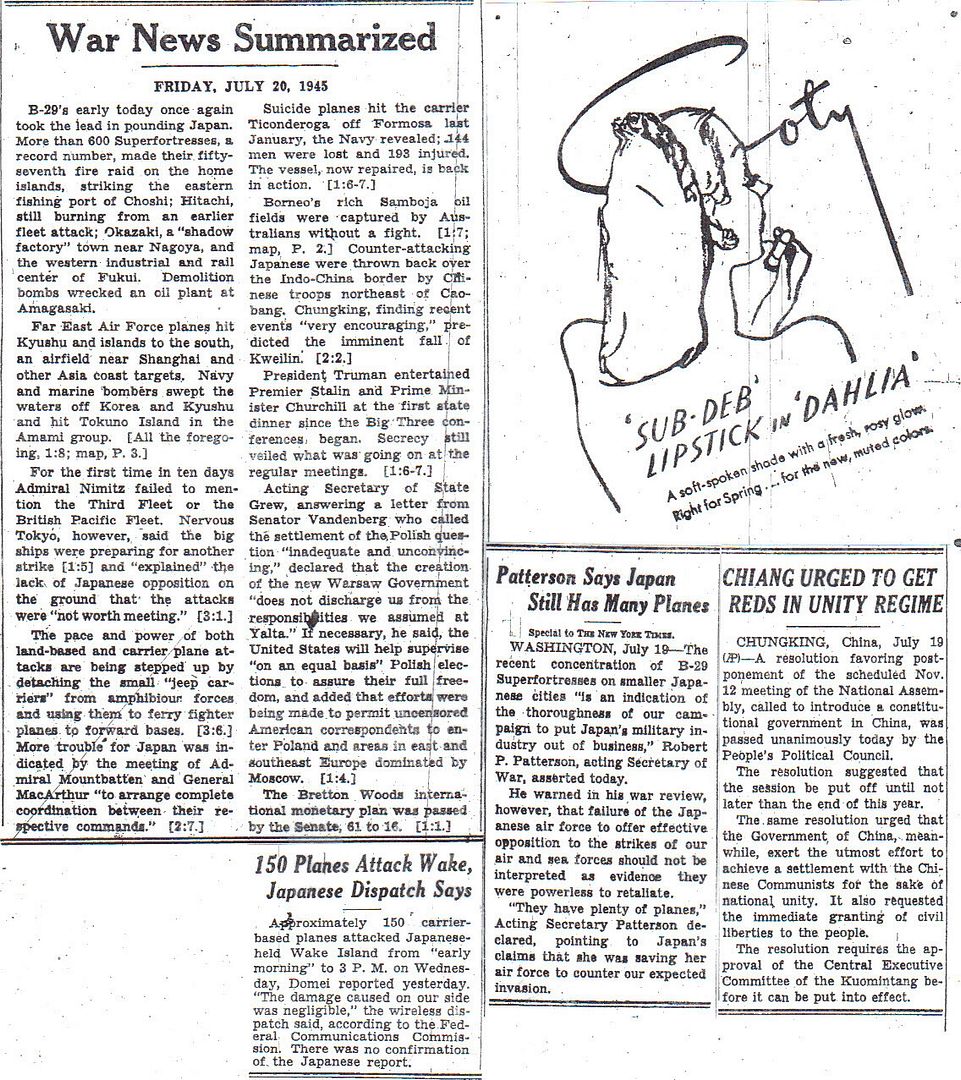
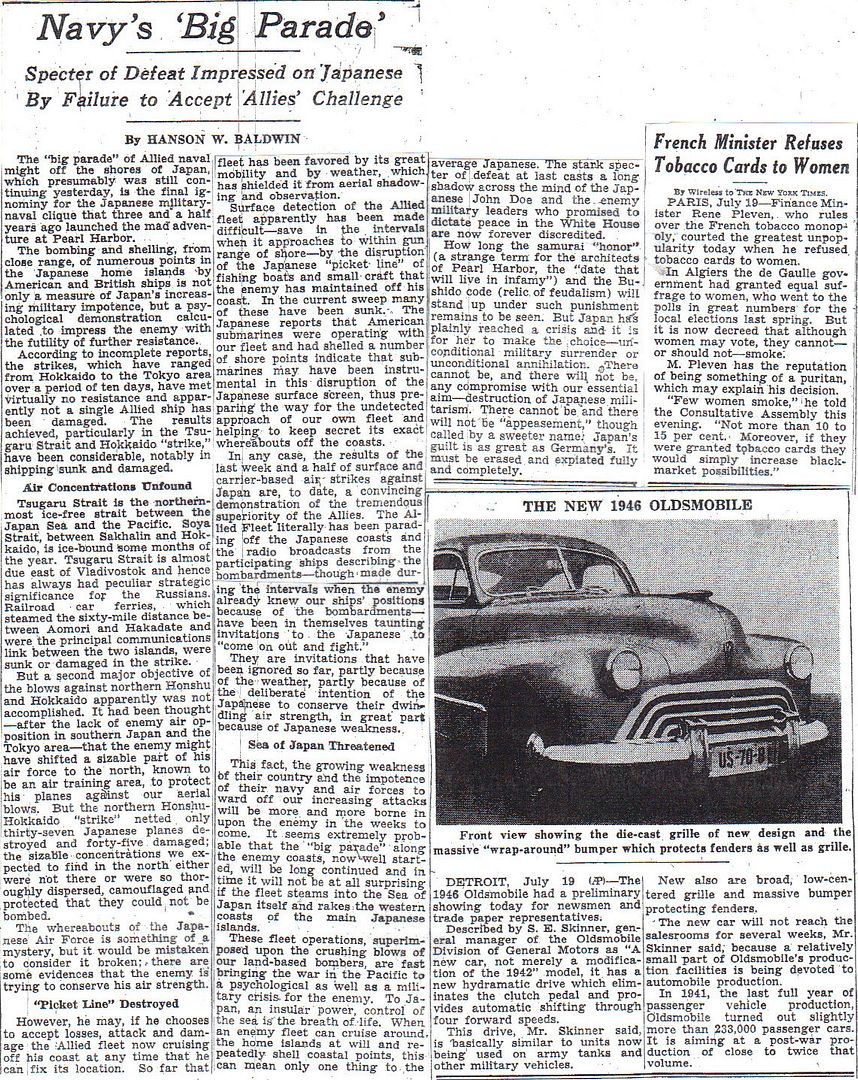
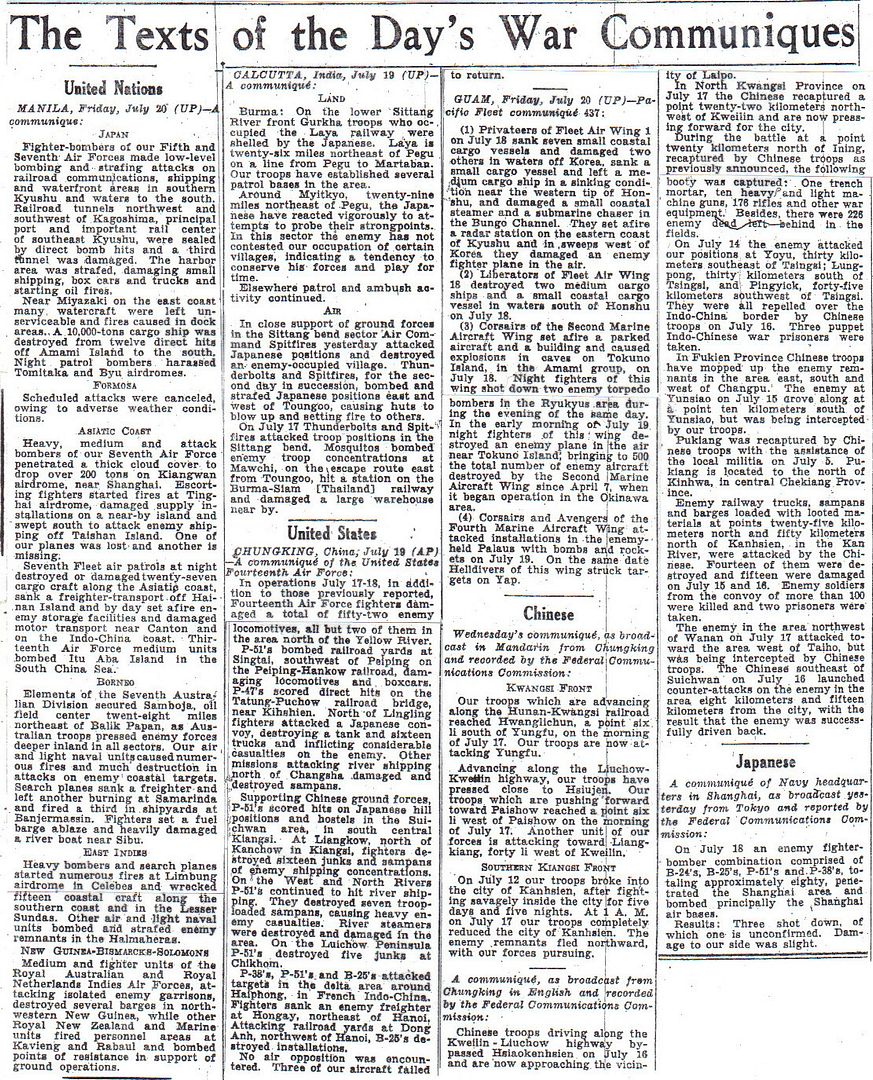
http://www.etherit.co.uk/month/6/20.htm
July 20th, 1945 (FRIDAY)
BELGIUM: Brussels: The premier, Achille Acker, tells King Leopold he should abdicate because of his “grave and unpardonable mistakes.”
GERMANY: Potsdam: Truman says that the Allies are making no territorial claims, wanting only peace and prosperity and “man’s greatest age.”
PACIFIC: In the Kurile Islands, 8 Eleventh Air Force B-24s fly the heaviest and most successful mission of the month, bombing hangars and revetments at Matsuwa Airfield on Matsuwa Island.
JAPAN: The Twentieth Air Force’s 393d Bombardment Squadron (Very Heavy), 509th Composite Group, begins a series of 12 precision attacks over Japan for the purpose of familiarizing the crews with the target area and tactics contemplated for the scheduled atomic bomb missions; the strikes (on 20, 24, 26, and 29 Jul) are mostly against (or near) cities previously bombed, in the general area of cities chosen for possible atomic attack, and involve from 2 to 6 aircraft in order to accustom the Japanese to sight of small formations of B-29 Superfortresses flying at high altitudes.
These are known as the Pumpkin Raids.
[Note: the following section didn’t reproduce well for this posting. The information is in chart form at the linked site - HJS.]
David Hebditch has chronicled these missions:
Ops. Miss. Date Aircraft Cdr. Crew Bombing Target Lat Long Result
20 4 20/07/45 44-27296 Price B-7 Primary Radar Fujikoshi Steel, Yoyama Unobserved
20 4 20/07/45 44-27298 Taylor A-1 Primary Visual Aluminum plant, Toyama Poor
20 4 20/07/45 44-27299 Devore A-3 Primary Visual Nippon Soda, Toyama Very Poor
20 2 20/07/45 44-27300 Bock C-13 Primary Radar Light Industry, Fukushima Unobserved
20 1 20/07/45 44-27301 Eatherly C-11 Opport. Radar RR Station, Tokyo Unobserved
20 1 20/07/45 44-27302 McKnight B-8 Secondary Radar Otsu urban Unobserved
20 3 20/07/45 44-27303 Wilson B-6 Secondary Radar Taira urban Unobserved
20 1 20/07/45 44-27304 Marquardt B-10 Secondary Radar Taira urban Unobserved
20 2 20/07/45 44-27353 Albury C-15 Aborted
20 3 20/07/45 44-27354 Classen A-4?? Primary Radar Tsugami-Atagi Manfg Company Unobserved
94 P-51s based on Iwo Jima are dispatched against targets, mainly airfields, at Kamezaki, Meiji, Okazaki, Nagoya, Kagamigahara, Hamamatsu, and Komaki, Japan; they claim 1-11 Japanese aircraft on the ground; 3 P-51s are lost.
CANADA: Corvettes HMCS Oakville, Prescott and St Lambert paid off Sorel, Province of Quebec.
Patrol vessels HMCS Ambler, Reindeer, Caribou and Moose and HMC ML 078 paid off Sydney, Nova Scotia.
U.S.A.: Washington: Congress ratifies the Bretton Woods monetary agreement.
The top songs on the pop charts today are
(1) “Dream” by The Pied Pipers;
(2) “The More I See You” by Dick Haymes;
(3) “Sentimental Journey” by Les Brown and his Orchestra with vocal by Doris Day; and
(4) “Stars and Stripes on Iwo Jima” by Bob Wills and his Texas Playboys.
The motion picture “A Thousand and One Nights” is released in the U.S.Directed by Alfred E. Green, this period adventure film stars Cornel Wilde, Evelyn Keyes, Phil Silvers and Adele Jergens; Shelley Winters appears in a bit part. Wilde is fast-talking Aladdin who romances the Sultan’s daughter until he finds out. Aladdin then uses a magic lamp with Keyes as the genie to try to win the daughter but the genie falls in love with him and tries to sabotage his plans. The film is nominated for two technical Academy Awards.
So how many planes are left. I remember seeing photos of lots of kamikaze subs and boats in small harbors ready for the invasion.
I remember reading an article about shipping planes on escort carriers. If they weren’t protected and sealed 100%, the salt air and water got to them.
I had no idea the US 3rd fleet, specifically the Iowa and other battleships, were actually shelling Japanese cities.
Read it about 2 weeks ago and it was mentioned again today.
Of the six US battleships damaged at Pearl Harbor, then repaired and returned to the fight, all six were in the western Pacific during the final months of the war:
In the Second World War, the old battlewagons still had important roles to play, and the 1941 Pearl Harbor fleet did their share of it.

I have been giving some thought lately to the strategic bombing of Japanese cities, and one of today’s columns sort of crystalized my thinking. The article today was about the firebombing of the small fishing city of Choshi. The article stated that the city was a target as a “food production center...a primary source of protein for Tokyo, Yokohama and other cities on the Kanto plain....” OK, it’s pretty obvious that we are running out of targets in the purely military/economic sense. Now we are going after the food supply for civilians, and we are dropping any pretense of “military” targeting.
And there doesn’t seem to be much hue and cry over the “morality” of it. So have we now gone past the valid use of military force and on into the realm of “war crimes?” I’ve posted before about the increasing cycle of brutality that takes place in prolonged wars. This is definitely the culmination of the same. I will make a point, though, that in the face of fanatical, hopeless resistance, there is mitigation to or justification for the “war crimes” aspect of this bombing.
The arguments are:
Stalingrad
Manila
Aachen
Berlin
Konigsberg
Naha
What do all of these cities have in common? They were all fought over by the competing land armies. All of them were left in ruins because of heavy urban fighting. In all of them, there were tremendous civilian casualties as well as military ones. The point is that if the Japanese are bent on continuing the war, it appears the United States will have to invade the Home Islands to end the war. It is a prolongation, at this point, totally the responsibility of the Japanese leadership. And if the United States is forced to invade the Home Islands, every city, town, village and collection of huts is going to be fanatically defended, just as the cities mentioned above were defended. And the civilians will perish in the fighting as those cities, towns, villages and hamlets are destroyed.
There is one other aspect that all four of those cities have in common. The armies that fought there suffered very high casualty rates. Urban fighting is bitter, and costly.
So we have a choice. We can destroy those cities and kill their civilian populations by attacking them on the ground with infantry, armor and artillery with each one being it’s own Stalingrad or Manila. Or we can destroy those cities and kill their civilian populations from 20,000 feet. One of those alternatives will result in tremendous loss of American lives. The other will not.
When you look at it that way, there really isn’t a choice.
The Nevada looks a lot like a South Dakota class battleship. If you look at before and after photos of California, West Virginia, Tennessee and Nevada, they all came out of their reconstruction looking more like South Dakota class battleships than their previous lives as World War 1 dreadnoughts. Other than lack of speed (about 10 knots slower than the new battleships), they were for all intents and purposes “modern” battleships.
And other than Pennsylvania, which was not as thoroughly modernized as the other Pearl Harbor veterans, those ships were kept in the reserve fleet until 1959 or so. The six other modern battleships of the North Carolina and South Dakota class were scheduled for scrapping only two or three years later.
Choshi was the final source of protein for the Kanto area; even today, it is the main connection to Tokyo for tuna, bonito, and sardines: tuna is to Japan what steak is to Texas, while bonito and sardines are necessary to the everyday Japanese traditional diet (and in 1945, everyone in Japan eats a "traditional diet," to the extent that it is available).
And one other thing. Choshi at this time is essentially the source for oshoyu, AKA soy sauce. Which means, among other things, that it is the hub for soybeans, the only other protein source for the urban areas. OTOH at this point there is probably little to no soy available, since it was very much an imported food from the colonies (e.g. Manchukuo), though bombing the soy sauce facilities would simply ensure that it would be difficult to continue regardless.
In other news, the bombing of the Bungo Straits (technically Bungo-suido or Bungo Channel) brings to mind the top-selling novel of the mid-50s, Run Silent, Run Deep, about a submarine captain who becomes obsessed with a Japanese vessel Akikaze, commanded by a Japanese who obtains the American nickname "Bungo Pete." But I have to get back to work...
I didn't know about the novel. I only know the story from the 1958 movie with Clark Gable and Burt Lancaster.
AFAIK the novel was altered to fit the movie.
Also, IIRC there is a scene in the movie where the men in the submarine are watching the contemporaneous-to-them movie Destination Tokyo and laughing at the way submarine activities were being portrayed--which is a bit ironic, because at the time Destination Tokyo was praised because, in spite of the melodramatic and propagandistic plot, it was supposed to provide as accurate a presentation of WWII Navy sub life as the movies would allow at the time.
“Run Silent Run Deep” was one of my favorite World War 2 movies. No surprise the movie was not true to the novel. As a practical matter, you cannot jam a 300 page novel into an hour and a half movie. Something’s got to go.
I noticed that this was already covered by the etherit.co.uk people, but I already wrote it and saved it for today, so what the heck:
Over four Japanese cities today, a Japanese observer would see a new tactic. Among other raiders was a formation of just three B-29s. Instead of a standard bombing run raining dozens of bombs, only one of the planes released just one bomb, whereupon the three planes scattered as if struck by a cue ball. If the observer were careful, he might have noticed that the bomb did not even look like one he had seen. It was much rounder, with large boxy fins on the end. And instead of striking a vital target, it exploded harmlessly in mid-air shortly thereafter. If he had pondered this, he might have disastrously misjudged this little air show as being relatively benign.
He was certainly intended to. The whimsical little show was partially intended to acclimate the Japanese to small, unaccompanied, harmless formations of three B-29s. For the 509th Composite Group had now arrived over Japan for their first combat missions there, final preparations for the world’s first atomic war, which they will soon win in just two missions. The missions today were the first to drop bombs that matched the characteristics of the Fat Man device under the combat conditions obtaining over Japan. The Fat Man (Nagasaki) plutonium implosion design was the one that was chosen for mass manufacture until Japan could not continue the war, so it was a focus of training. Today’s bombs were known as pumpkin bombs, and were identical in weight, shape, ballistic characteristics, and fusing to the Fat Man bomb, except with only a high-explosive payload. The 509th Composite Group would also practice under combat conditions the life-or-death evasion techniques necessary in the near vicinity of a 20 kiloton nuclear explosion.
It is well that the Japanese were not able to shoot down one of the practice runs, because they might have discovered disquieting clues. The B-29s that the 509th had were specially modified. The bomb bays were modified to carry a single very heavy bomb, with pneumatic actuators to open the bomb bay doors quickly, and many other modifications.
It was not quite the air show it seemed.
Agreed.
But current military doctrine is that you don't need to, and morally should not, destroy an entire civilian population, if you simply take down their leadership, plus command & control infrastructure.
In effect: if you cut off their head, then the beast can do you no more harm.
And, we're seeing a strategic response to that, with amorphous, stateless, apparently leaderless jihadis popping up randomly here... there... now over there.
A movement without leaders cannot be decapitated, and so we see today's "war on terror" seemingly frittering away our resources.
Not that I think such a war is necessarily lost, just that it requires a new focus, tactics and leadership.
Leadership matters.
I am by no means an expert but Run Silent Run Deep seemed very realistic in its depiction of how WWII submarines operated.
Leadership does matter. For the purposes of today, give me a leader who says “We kill them and keep killing them until either they quit or there are none left.”
While I’m a little more extreme than most, I hate losing. I’d rather win.
Disclaimer: Opinions posted on Free Republic are those of the individual posters and do not necessarily represent the opinion of Free Republic or its management. All materials posted herein are protected by copyright law and the exemption for fair use of copyrighted works.